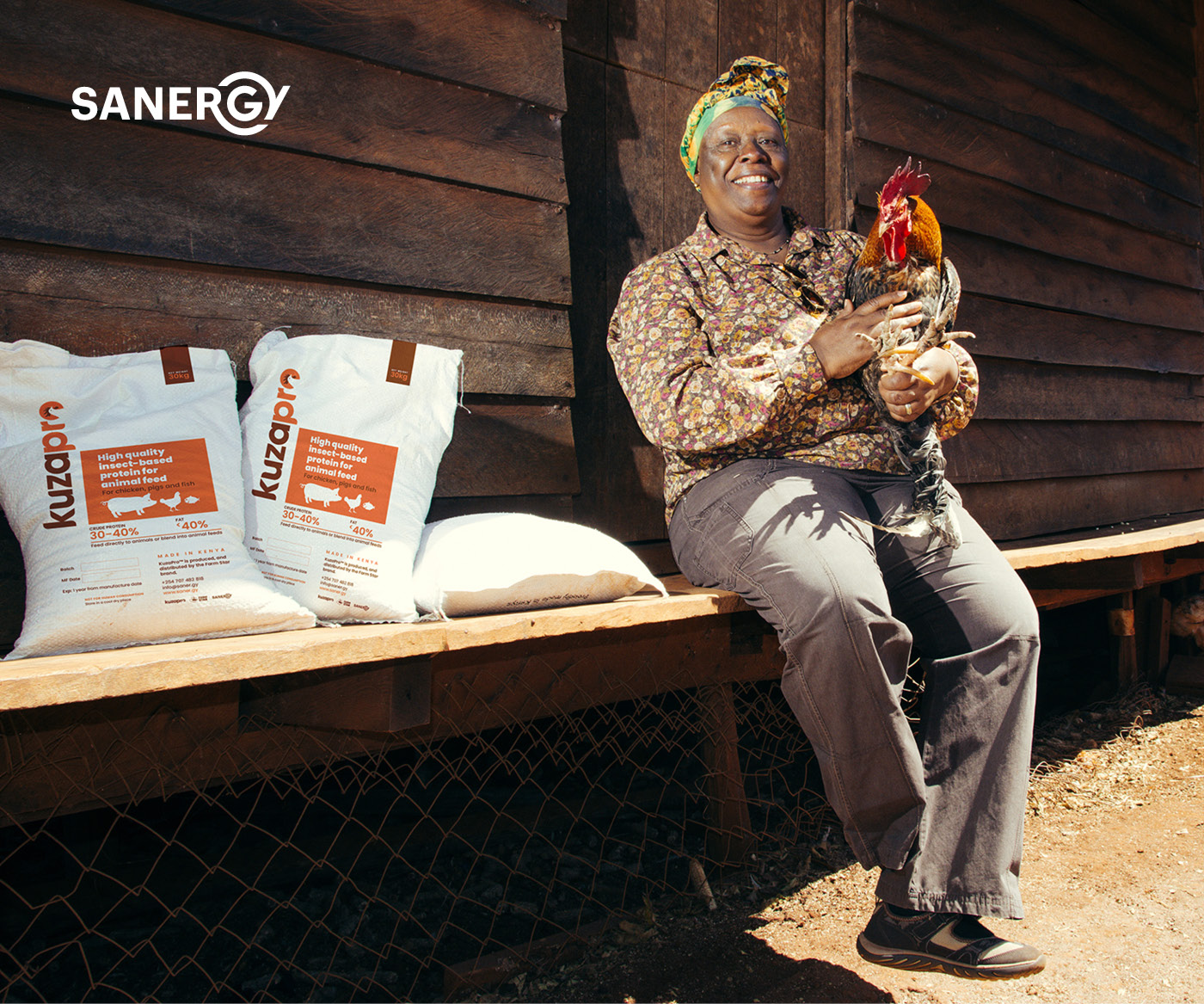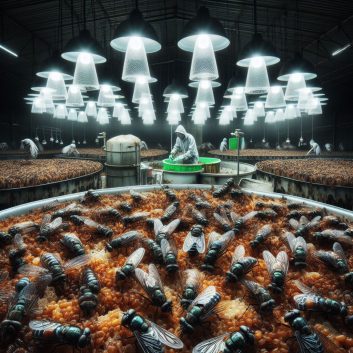Protein & Carbohydrate
Proteins and carbohydrates play a critical role in the development of black soldier fly (BSF) larvae, which are valued for their potential as a sustainable source of protein and bioconversion of organic waste. Here’s a summary of the importance of these nutrients in BSF larval development:
Protein:

- Essential Growth Factor: Protein is a fundamental component of the BSF larval diet, serving as the primary source of amino acids. Amino acids are the building blocks of proteins and are crucial for the development and growth of the larvae.
- Rapid Growth: BSF larvae are known for their remarkable growth rates, and protein is a major contributor to this rapid development. Adequate protein intake ensures larval biomass increases quickly, making them an efficient bioconversion tool.
- High-Quality Biomass: The protein content of BSF larvae is exceptionally high, making them a valuable protein source for various applications, including animal feed and human consumption.
- Nutrient Recycling: BSF larvae can recycle nutrients from organic waste materials, effectively upcycling human and livestock uneatable protein source, such as agricultural waste and food scraps, into edible protein-rich larvae.
Carbohydrates:
- Energy Source: Carbohydrates provide the energy necessary for BSF larval activities, including locomotion, digestion, and metabolism. They are an important source of calories for larvae.
- Balancing the Diet: While protein is crucial for growth, an appropriate balance of carbohydrates is necessary to optimize the nutritional profile of BSF larvae. Carbohydrates to protein needs to be balanced to ensure that dietary protein is used for growth rather for energy production, which ends up with urea or uric acid further converting to ammonia emissions.
- Utilization of Organic Waste: Carbohydrates in organic waste materials, such as cellulose and lignin, can be broken down and utilized by BSF larvae, enabling the efficient conversion of a wide range of organic substrates into biomass.
- Chitin Source: Carbohydrates can also act as backbones for certain amino acids and as building blocks to produce chitin, a structural polysaccharide presents in the exoskeleton.
In summary, proteins and carbohydrates are essential nutrients for black soldier fly larval development. Proteins are crucial for growth and biomass production, while carbohydrates provide the necessary energy and help balance the larval diet. The ability of BSF larvae to efficiently convert organic waste materials rich in these nutrients into high-quality protein biomass makes them a promising solution for sustainable agriculture, waste management, and protein production.
Substrate
BSF larvae can digest anything organic excepting lignocellulosic materials (e.g., wood chips, paper mills, wheat straw, etc).
In Western Europe, there are several common substrates/raw materials used for BSF larvae production, including:
Fermentation co-products: wheat yeast concentrate, grains residues from bioethanol extraction.
Wheat co-products: wheat bran, wheat gluten feed, wheat starch.
Brewery co-products: brewery’s grains, brewer’s yeast, expired beer.
Bakery co-products: waste bread, coolies mix.
Potato co-products: potato peels, fries mix, potato stack (waste), potato starch.
Corn co-products: corn steeping water, corn cob mix, maize-distiller’s dried grains with soluble (DDGS).
Dairy co-products: whey, lactose concentrate.
In the Netherlands, there are 2 suppliers listing all available substrate/raw materials that can be fed to Black Soldier fly larva; feel free to have a look:
www.duynie.com/nl/producten-nl
In summary, the wide range of organic substrates that BSFL can consume offers flexibility in managing their nutrient composition. By selecting and managing substrates strategically, it is possible to optimize BSFL nutrition to meet specific objectives, whether for animal feed, sustainable waste management, or resource recovery.
Dry Matter
Dry matter content is an old but new topic. ~30% dm content is well documented in many literatures. While we often access to more wet substrate (e.g., <25% dm) as experienced in western European. In this case, we must mix with other dry substrate such as wheat bran. It’s worth noting that wheat bran has a low digestibility (e.g., approximate digestibility of dry mass: 46% and 54% digestibility for nitrogen as reported in mealworm) and has been reported to contribute to a high ammonia emission.
Understanding the dry matter percentage in the diet of black soldier fly larvae (BSFL) is crucial for accurately assessing their nutritional content. This parameter can vary significantly depending on the substrate and moisture conditions. Here’s a concise summary:
Importance of Dry Matter %:
- Nutritional Accuracy: Dry matter percentage is essential for accurately determining the nutritional content of BSFL. It represents the proportion of solid material in the larvae, excluding water content.
- Water activity: Water activity is a means for measuring whether the water in a substrate/food can be utilized by microorganisms. A high-water activity leads to harmful bacteria, parasites, Mold, and viruses (fly-farmers often complain the substrate gets Mold).
- Survivorship: Low dry matter content (e.g., <27%) often leads to free water (e.g., see tiny water-pool on the substrate) and causes larval drowning. As a result, larvae either escapes or dies.
- Optimization: Substrates tend to lose moisture as they age, which can pose challenges for the larvae as they require an optimal water content for their daily feeding. To address this, in practical terms, water can be introduced to the substrate during the later stages of rearing. Alternatively, a gradual adjustment in the dry matter content, such as increasing the water content, can be considered for a continuous larvae feeding approach. On the other hands, the introduction of water allows larvae to reuse dried-out feed.
In summary, dry matter percentage is a critical parameter for accurately assessing the nutritional content of black soldier fly larvae. Recognizing that this parameter can vary based on the substrate and moisture conditions is essential for effective diet formulation and production management.




Leave a Reply